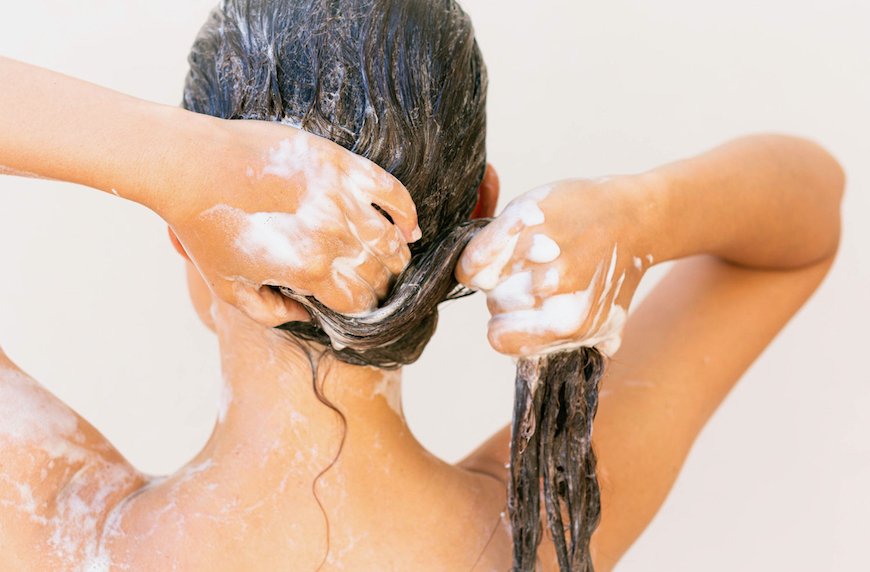What Are Liquid Plastics—and Why Are They in So Many Beauty Products?
There's a (not so) new problematic plastic in town. Here's what to know about liquid plastics—and how to avoid them.

Published
By now, we're all aware of our plastic problem. Almost 60% of the 8.3 billion tons of plastic we've made are still on the planet, some recycled, some in our oceans and landfills. Even after severe degradation, the material survives as microplastics, which, in recent years, have been found everywhere, including human blood and lung tissue. Now, we have yet another form of plastic to reckon with: liquid plastics.
What Are Liquid Plastics?

While we're used to thinking of plastics as a packaging problem, the same chemicals are also used as ingredients. These iterations are known as liquid plastics.
"Liquid plastics are liquified manmade polymers (plastics) made of petrochemicals," explains Erica Cirino, communications manager at the Plastic Pollution Coalition. The plastics are used to enhance the sensory experience and functionality of many cosmetic products (think shampoo, conditioner, and more) as well as household cleaning products. "Some examples of liquid plastics include PEGs, carbomers, acrylates, copolymer, butylene, and substances that end in -cone or -siloxane," says Cirino.
According to a report from the British Royal Society of Chemistry, 40.1 million tons of liquid polymers are produced each year—that’s equivalent to over 14,500 Olympic-sized swimming pools.

Solid Body Moisturizer
No liquid plastics needed in this solid body moisturizer bar. Its clean formula effortlessly glides over your skin.
Why Are Liquid Plastics Used in Beauty Products?

Your current lineup likely contains liquid plastics without you even realizing it. According to the Plastic Soup Foundation, 87% of products from the 10 best-selling cosmetics brands contain microplastics. That includes "all possible synthetic polymers, whether added in solid, liquid, semi-liquid or water-soluble form," says the report. But why are they such a staple in product formulations?
"Liquid plastics are commonly used to affect the viscosity or flow of cosmetic products including shampoos, conditioners, lotions, nail polish, and many others," says Cirino.
In addition to the general feel of the product, liquid polymers can enhance the delivery of active ingredients, disperse and stabilize ingredients, and provide moisturizing properties. "Viscosity can affect both sensory experience and performance—but this comes at a cost to our health and the environment," says Cirino. "Liquid plastics, like all plastics, contain chemicals known to harm people and nature."
According to Lorraine Dallmeier, a biologist, Chartered Environmentalist, and the CEO of Formula Botanica, these ingredients make their way into both our waterways and our bodies. "They're effectively liquid microplastics," she says. "No one has studied the impact of these ingredients on our environment, and there are still many gaps in the ecotoxicological data of liquid polymers."
What Can We Do About Liquid Plastics?

Dallmeier notes that as consumer expectations around product efficaciousness grow, so does polymer innovation, meaning that this is a growing issue within the personal care industry rather than one that's in the process of being solved.
To combat the problem, opt for cosmetic formulas that you know to be certified organic, and that contain predominantly natural ingredients—and per Dallmeier's point, manage your expectations. "There are alternatives, but we have to accept the fact that the performance of products free of liquid plastics may not be the same as products containing this substance," says Cirino.
The takeaway? Changing the way we think about cosmetic products—how they should feel, what they should look like, and what sort of results they will deliver—will be the biggest and most important step away from a world of liquid plastics.

Microplastics: What They Are and How They Harm the Planet
Microplastics are in our food, the air, and even our drinking water. Here's what they are, how they're harming the environment, and how to avoid them.

Plastic-Free Glitter Is Officially a Thing—and It's a Holiday Must-Have
Submission Beauty's commitment to sustainable makeup now includes plastic-free glitter, allowing you to indulge in holiday sparkle sans eco-guilt.

6 Non-Aerosol and Natural Dry Shampoo Options
These non-aerosol and natural dry shampoo options don't contain benzene, helping you create a haircare routine that's better for you and the planet.
